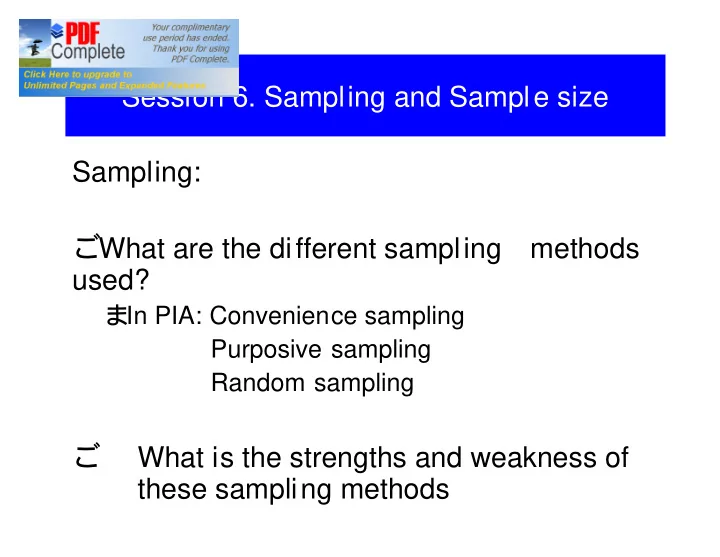

Session 6. Sampling and Sample size Sampling: � What are the different sampling methods used? � In PIA: Convenience sampling Purposive sampling Random sampling � What is the strengths and weakness of these sampling methods?
Sampling Strengths / Weakness / Methods Advantage Disadvantage � � Random Most scientific costly and time � consuming more truthful � often not practical results � Convenience Save time and Least scientific � money Samples may not be representative � Purposive Save time and results may not money represent other villages
Which is of these sampling methods is / are right and which one (s) is/are wrong, and why? � There is no right or wrong answer on sampling methods!! � consider the end users of the assessment findings � Influence policy � publish findings in scientific journals Random Sampling � extrapolate the result � For internal use of the f indings : Purposive & convenience
Sample size � What is the appropriate sample size needed for PIA? � No correct answer on actual sample size! � capture the overall trends -smaller sample size can be used for this. � Factors to be taken into consideration: � type and number of questions to be answered (many questions, stratification by gender, wealth group � etc) � type and number of assessment tools (e.g. � pair-wise � and � matrix � ranking are time consuming) � attribution methods needed (the use of control group)
Validity and Reliability � Systematic application of the PIA tools � the same tools should be applied consistently � use the same indicators � use the same number of counters � framing the questions in exactly the same way
Recommend
More recommend